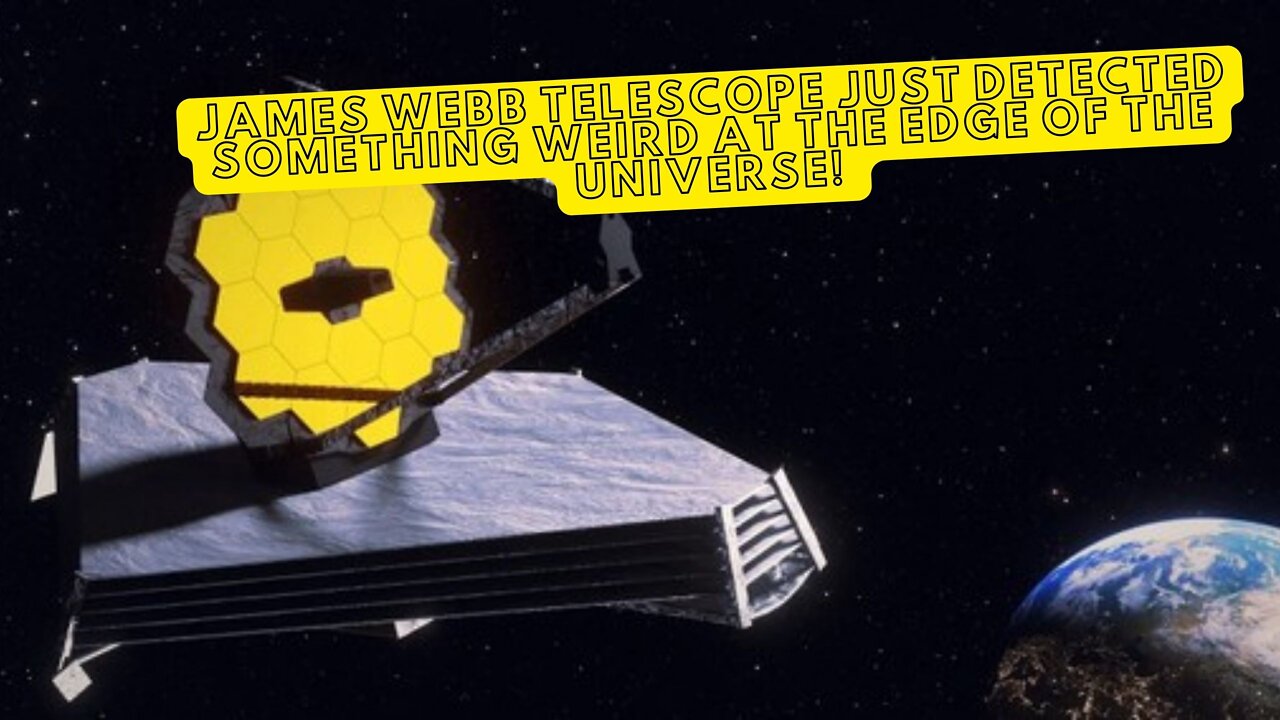Premium Only Content

JAMES WEEB Telescope Just Detected Something Weird At The Edge Of The Universe!
What do you do when you want to see something so far into space that you'll never be able to reach it? You send a space telescope into orbit. NASA has done just that by deploying the James Webb space telescope into outer space to enable us to see more of our cosmos.
The very edge of the universe will be one of the targets of the space telescope. The discoveries at the universe's edge promise to be terrifying. What will the first telescope observe at the universe's edge? How does it affect you? Join us as we investigate the startling discovery made by the James Web space telescope at the universe's edge that shakes everything.
Humans have long been intrigued by what lies underneath our feet, but as our research equipment becomes more advanced, our fascination has grown to include deep space. The invention of the telescope was critical in furthering our understanding of the cosmos; while the concepts of telescopes were known in the late 16th century, the first telescopes were not made until 1608 in the Netherlands.
The story of Galileo and his telescopic views demonstrates how powerful a tool for seeing and collecting information can be in changing our understanding of the universe. Early telescopes were largely used for making observations on Earth and assisting with activities such as surveying and military tactics, but Galileo Galilei became one of a small bunch of astronomers who aimed telescopes towards the heavens.
Galileo created his own telescope after learning about the Danish perspective glass in 1609, and the exhibition of the telescope secured him a lifetime lectureship at the university following his initial success. Galileo spent his time improving the instrument; his initial telescope could magnify objects three diameters, making them appear three times larger than they were; but, with further refinement of the design, Galileo built an instrument that could magnify eight times, and eventually 30 times.
Space and telescopes go hand in hand. This is due to the vastness of space; for example, the nearest star to us is Proxima Centauri, which is around 4.2 light years away; one light year is approximately 5.88 trillion miles or 9.6 trillion kilometers. This means that the distance between Proxima Centauri and us is 25 trillion miles. Even though the Mars planet that Elon Musk is attempting to colonize is close by, volunteers will have to undertake months and months of journey across space before touching down on Mars to start living their lives.
jwst,james webb,james webb telescope,edge of the universe,james webb telescope discovery,jwst proxima b,universe discovery,end of the universe,james webb big bang,james webb picture,james webb discovery,hubble,destiny,voyager,ridddle,techspace,starship,elon musk,spacex,space,science,documentary,space news,james webb news,jwst update,stepehen hawking,black hole,theory of everything,singularity,nasa discovery,nasa,universe edge,james webb space telescope.
-
![Mr & Mrs X - Feminism, Family, Federal Reserve, The Rise Of The [DS] Agenda](https://1a-1791.com/video/fwe2/12/s8/1/6/F/R/n/6FRnz.0kob-small-Mr-and-Mrs-X-Feminism-Famil.jpg) 58:10
58:10
X22 Report
6 hours agoMr & Mrs X - Feminism, Family, Federal Reserve, The Rise Of The [DS] Agenda
132K42 -
 16:37
16:37
Robbi On The Record
1 day ago $5.20 earnedThe Theater of Manufactured Outrage - When Left and Right Dance for the Same Puppet Master
21.3K17 -
 31:27
31:27
Stephen Gardner
17 hours ago🔥BOMBSHELL: Mortician EXPOSES Charlie Kirk Autopsy - The Key Evidence EVERYONE Missed!
102K253 -
 30:00
30:00
BEK TV
3 days agoGUT HEALTH AND THE POWER OF KIMCHI WITH KIM BRIGHT ON TRENT ON THE LOOS
41.5K4 -
 LIVE
LIVE
IamNibz
8 hours ago $1.04 earned6-7 Minecraft Stream
86 watching -
 36:53
36:53
daniellesmithab
4 days agoSupporting Alberta's Teachers and Students
117K26 -
 1:25:28
1:25:28
VapinGamers
3 hours ago $0.78 earnedTools of the Trade - EP07 Lights, Camera, Go Live with Joker - !rumbot !music
12.3K4 -
 14:38
14:38
Nikko Ortiz
22 hours agoADHD vs Autism
80.9K50 -
 LIVE
LIVE
TonYGaMinG
3 hours ago🟢 INDUSTRIA 2 PLAYTEST / ACTIVE MATTER LATER
125 watching -
 2:43:39
2:43:39
FoeDubb
3 hours ago🏰KINGDOM MENU: 🎮SHORT SATURDAY SESH ON DECK DILLY DILLY!!
16.2K3
